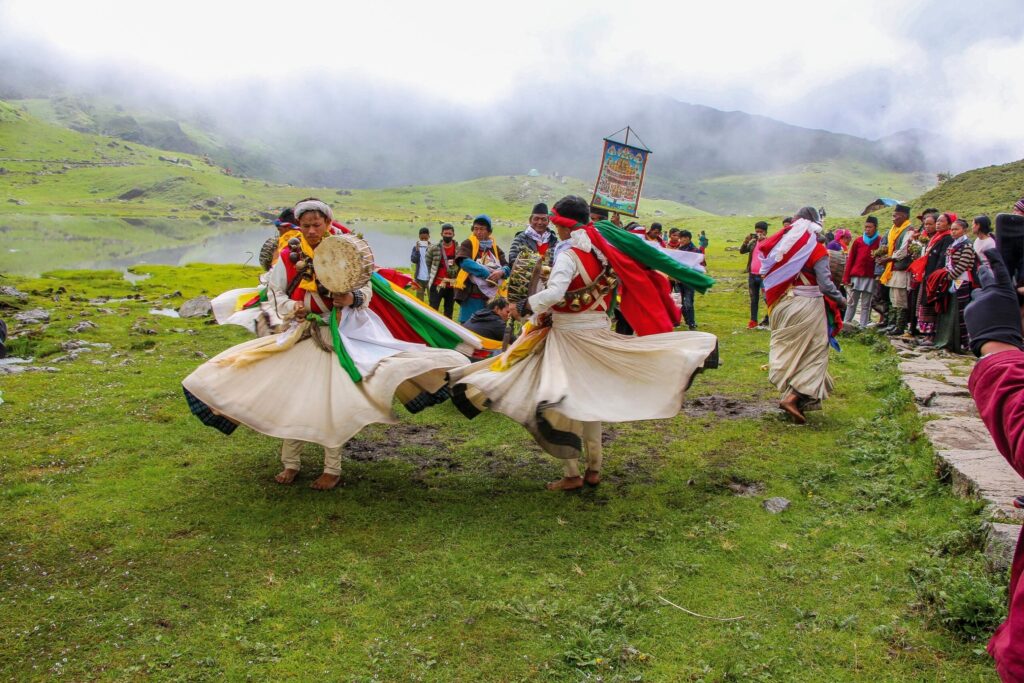Introduction
Nepal, a land of spirituality, mysticism, and ancient traditions, has long been a destination for seekers of enlightenment and cultural immersion. Among its many spiritual attractions, Shamanism—an age-old healing and spiritual practice—has been gaining attention from travelers worldwide. Shamanism tourism in Nepal offers a unique blend of cultural exploration, spiritual healing, and adventure, making it an emerging prospect in the tourism industry.
What is Shamanism?
Shamanism is one of the oldest spiritual practices in the world, deeply rooted in nature, energy, and the spirit world. It is believed to have originated thousands of years ago, and its influence can still be found in various indigenous cultures, including in Nepal. Shamans act as intermediaries between the physical and spiritual worlds, using rituals, chants, and medicinal herbs to heal, guide, and protect individuals.
Who are Shamans?
In Nepal, shamans—often called ‘Jhankris’ or ‘Dhami’—are spiritual healers who practice ancient techniques to connect with higher energies. They are respected figures in local communities, particularly in remote and indigenous villages. Shamans do not follow a structured religious doctrine but instead rely on visions, drumming, and rituals to communicate with spirits and ancestors. Many Nepalese still seek their guidance for healing, protection from negative forces, and even for making important life decisions.
The Practice of Shamanism in Nepal
The practice of Shamanism in Nepal is a fascinating blend of animism, Hinduism, and Buddhism. It is deeply tied to nature, and many shamans practice in sacred locations such as forests, caves, and near rivers. Common rituals include healing ceremonies, where shamans use chanting, drumming, and herbal medicine to cure ailments. Spirit journeys involve connecting with the spirit world to seek guidance, while exorcism and protection rituals drive away negative energies or spirits. Blessings and predictions are also common, helping individuals through divine insights. These rituals have been passed down through generations and continue to be a fundamental part of many Nepalese communities.
The Growing Interest in Shamanism Tourism
With the rise of wellness tourism and the search for spiritual awakening, Shamanism tourism in Nepal is becoming increasingly popular. Many travelers, especially from Western countries, seek authentic experiences that go beyond conventional sightseeing. Nepal offers an ideal setting for such experiences due to its rich cultural traditions, natural beauty, and spiritual energy. Tourists who are interested in Shamanism can engage in various activities such as participating in shamanic healing rituals, attending workshops on energy healing and meditation, living with indigenous communities to understand their way of life, and trekking to sacred sites known for their spiritual power.
Benefits of Shamanism Tourism
Shamanism tourism brings a range of benefits, both for travelers and local communities. For travelers, it offers spiritual growth and healing, as many seek shamanic experiences to heal emotionally, physically, or mentally. It also provides a unique cultural experience, allowing visitors to deeply explore Nepal’s ancient traditions and spiritual heritage. Moreover, since most shamanic rituals are conducted in natural surroundings, travelers get an opportunity to reconnect with nature and experience a sense of peace. For local communities, Shamanism tourism provides economic opportunities for shamans, guides, and rural inhabitants. It also plays a crucial role in cultural preservation by encouraging younger generations to learn and continue these ancient practices. Furthermore, since Shamanism tourism often promotes eco-friendly and mindful travel, it contributes to sustainable tourism development.
Challenges and the Way Forward
Despite its potential, Shamanism tourism in Nepal faces certain challenges. One of the major concerns is authenticity, as some commercialized shamanic experiences lack genuine representation of traditional practices. There is also a lack of awareness, with many potential tourists being unaware of the existence and benefits of Shamanism tourism in Nepal. Another challenge is the limited infrastructure in remote areas where authentic shamanic experiences can be found. To overcome these challenges, Nepal’s tourism industry can develop ethical and authentic shamanic tourism programs, promote Shamanism tourism through responsible marketing, and train local guides and communities to facilitate better cultural exchange.
Shamanism tourism in Nepal is a fascinating and unique niche that holds immense potential. It not only offers travelers a deeply transformative experience but also contributes to preserving Nepal’s rich cultural heritage and boosting local economies. With the right approach, Shamanism tourism can become one of Nepal’s signature offerings in the global tourism market, attracting spiritual seekers, wellness travelers, and cultural explorers alike.

